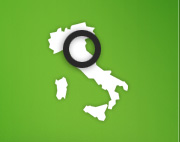History of Emilia Romagna
From Villanovan culture to the modern province in the heart of Italy
Emilia Romagna has been settled since Early Bronze Age. Urn discoveries in Villanova near Bologna gave the Villanovan culture its name. Romans occupied the territory in the 3rd century BC, founded several cities and built Via Emilia between Rimini and Piacenza. After Rome’s division Ravenna became the capital of the Roman Empire. Today’s Emilia Romagna was divided into several duchies in medieval times and was established as a unified region under its contemporary name after World War II.
Villanovan culture and Romans
Excavations near Modena and urn discoveries in Villanova near Bologna, which gave name to the Bronze Age Villanovan culture, suggest that Emilia Romagna has been populated since the second millennium BC. It had been colonised by Etruscans and Gauls from the 8th century BC on, and eventually by the Romans beginning around 268 BC. While the Gauls introduced pig breeding, which has had a huge impact on Emilia Romagna’s culture and cuisine up to today, the Romans founded several cities such as Placentia (Piacenza), Arminium (Rimini), Mutin (Modena), Forum Livii (Forli) and Bononia (Bologna). Consul Marcus Aemilius Lepidus arranged the construction of the important Via Aemilia (Via Emilia) from Rimini to Piacenza in 187 BC. Its name (Aemilia) was assigned to the whole region under Augustus.
Emilia Romagna in the Middle Ages
The division of the Roman Empire initially caused the Roman capital to move to Milan and eventually to Ravenna as a protection from the invading Goths. The city adopted Rome’s heritage and was expanded into the empire’s pompous capital. In combination with its surrounding area Ravenna became the region of “Romania”, the second part of the name of today’s province. After the deposition of Augustus, the last emperor of the Western Roman Empire, by Odoaker in 476 Ravenna became the capital of the Eastern Goth Empire and was eventually incorporated into the Eastern Roman Empire in 527 by emperor Justinian as an Italian counterpart of Constantinople.
Pippin’s bestowal caused the formation of the Papal States in Central Italy and the expulsion of the Langobards – Ravenna and the regions of Emilia Romagna remained in Frankish-German possession. In the era of Italian city republics powerful noble Italian families such as the Este in Ferrara, Modena and Reggia, and the Malatesta in Rimini reigned. All of them supported art and made the cities of Emilia Romagna Renaissance pioneers.
Emilia Romagna from modern age to today
Even though the powerful families of Este and Farnese were still reigning the region became the pawn of Papal States, the Spanish, French and Hapsburgs. Napoleon founded the Cisalpine Republic including Bologna, Modena, Ferrara and the capital of Reggio after his invasion of Italy. For the first time, the green, white, and red Tricolore was flying as the flag of the republic. After the Congress of Vienna, the duchy of Parma-Piacenza fell into the hands of the Hapsburgs. The region was integrated into the United Kingdom of Italy in 1870. The region got its official name of “Emilia Romagna” in 1947.


Tweet